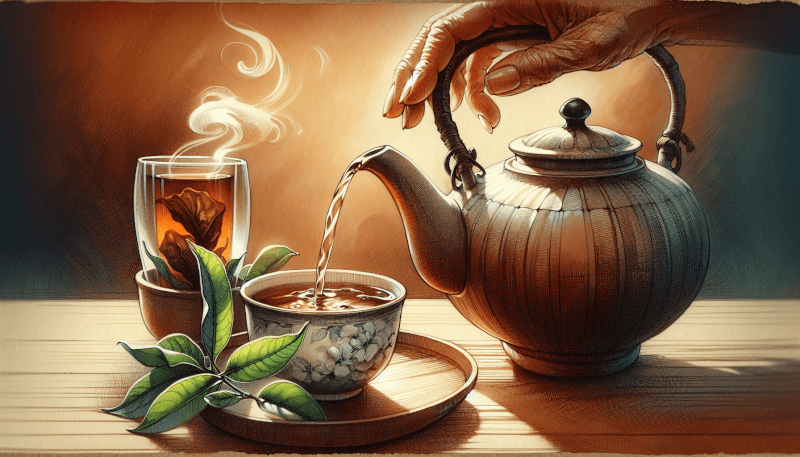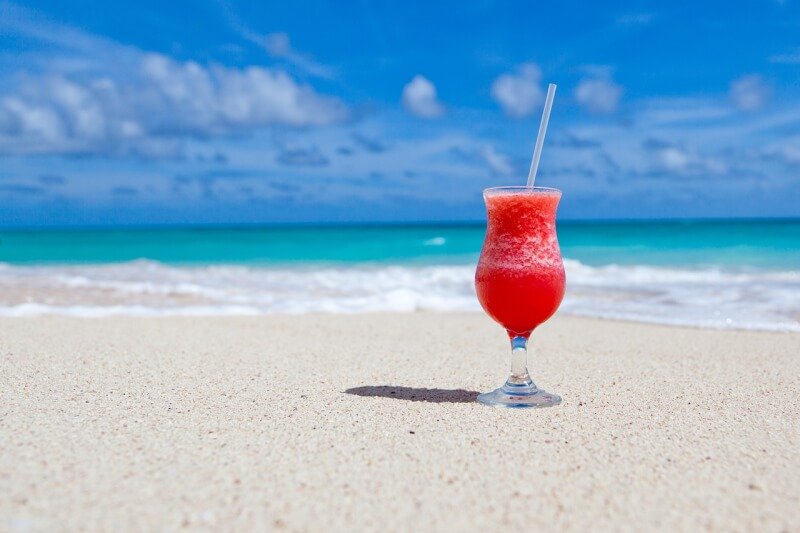Imagine starting your day with a comforting and invigorating cup of tea, perfectly brewed to your taste. In this article, we will guide you through the art of brewing the perfect cup of tea, step by step. From selecting the right tea leaves to steeping them just right, we will share all the secrets to help you achieve tea perfection. Whether you are a seasoned tea lover or a novice exploring the world of tea, this article is for you. Get ready to elevate your tea-drinking experience and savor every sip of your homemade, flawless cup of tea.
Choosing the Right Tea
Choosing the right tea to brew is the first step in creating the perfect cup. One important decision to make is whether to use loose leaf tea or tea bags. Loose leaf tea offers a more authentic and flavorful experience, as the leaves have more room to expand and infuse in the water. Tea bags, on the other hand, offer convenience and are great for on-the-go or quick brewing. Consider your lifestyle and preferences when deciding which option is best for you.
Another factor to consider when choosing tea is the type of tea you prefer. There are various types of tea, including black, green, white, oolong, and herbal teas. Black tea offers bold and robust flavors, while green tea is known for its light and grassy taste. White teas are delicate and subtle, while oolong teas fall somewhere in between. Herbal teas, on the other hand, are not made from tea leaves but instead are made from dried herbs, fruits, or flowers. Consider trying different types of tea to find your favorite flavors.
In addition to the type of tea, it’s important to pay attention to the tea’s origin and quality. Some tea regions are known for producing high-quality teas, such as Darjeeling in India and Assam in China. Tea from these regions may have unique flavors and characteristics. Look for teas that are sourced from reputable sellers and consider trying teas from different origins to explore the wide variety of flavors available.
Finally, don’t be afraid to experiment with different tea flavors. There are countless options available, from classic favorites like English Breakfast and Earl Grey to more unique blends that incorporate fruits, flowers, or spices. Trying new flavors can be a fun and exciting way to expand your tea palate and discover new favorites. Keep in mind that taste is subjective, so what may be enjoyable for one person may not be the same for another. Allow yourself to explore and find the flavors that suit your preferences.
Water Selection and Preparation
The quality of water used in brewing tea can greatly impact the taste and overall experience. It is best to use cold, fresh, and filtered water for the best results. Tap water may contain impurities or chlorine, which can affect the flavor of the tea. Filtered water helps to remove any unwanted substances and ensures a clean and pure taste.
When preparing your tea, it is important to avoid using distilled or softened water. Distilled water lacks minerals, which are essential for extracting the flavors from the tea leaves. Softened water, on the other hand, contains high levels of sodium, which can distort the taste of the tea.
To enhance the brewing process, preheat your teapot or teacup before adding the water and tea leaves. This helps to maintain a consistent temperature throughout the brewing process, ensuring optimal flavor extraction. You can preheat your teapot or teacup by pouring hot water into it and then discarding the water before adding the tea.
Determining the water-to-tea ratio is also crucial in achieving the perfect cup of tea. As a general guideline, use one teaspoon of tea leaves for every 8 ounces of water. However, this ratio can be adjusted based on personal preference. If you prefer a stronger brew, you can increase the amount of tea leaves, or if you prefer a milder taste, you can decrease the quantity.
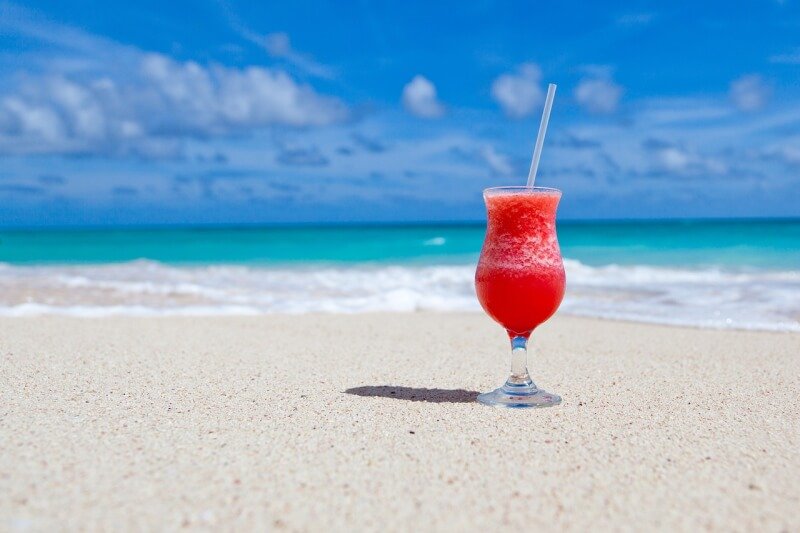
Proper Tea Leaf Measurement
To ensure accuracy and consistency in your tea brewing, using a kitchen scale for measuring tea leaves is highly recommended. This allows you to measure the exact amount of tea needed, ensuring a consistent flavor profile with each brew. Simply place your teapot or cup on the scale, zero it out, and then add the desired weight of tea leaves.
If you don’t have access to a kitchen scale, you can still follow general guidelines for tea measurements. As mentioned earlier, a teaspoon of tea per 8 ounces of water is a common recommendation. However, it’s important to note that different types of tea may require different amounts. For example, black teas are typically stronger and may require less tea leaves, while green or white teas may require more.
Ultimately, the amount of tea you use should be adjusted based on personal preference. If you prefer a stronger or more intense flavor, you can add more tea leaves. Conversely, if you prefer a milder taste, you can reduce the amount. Don’t be afraid to experiment and find the perfect balance for your taste buds.
Water Temperature Control
Controlling the water temperature is crucial in bringing out the flavors and nuances of different teas. Each type of tea has its ideal brewing temperature, and deviating from it can result in a subpar cup. Understanding the ideal temperature for different teas is key to achieving the perfect brew.
For black, herbal, and some oolong teas, boiling water is typically recommended. These teas require higher temperatures to fully release their flavors. Bring the water to a rolling boil and then pour it over the tea leaves.
Green, white, and delicate teas, on the other hand, require slightly cooler water to avoid burning or over-extracting the leaves. The ideal temperature for these teas ranges from 160°F to 180°F (71°C to 82°C). To achieve this temperature, bring the water to a boil and then let it sit for a few minutes to cool slightly. It’s important not to pour boiling water directly onto these teas, as it can result in a bitter or astringent taste.
Investing in a thermometer or kettle with temperature settings can be incredibly helpful in ensuring precise water temperature control. These tools allow you to accurately measure the temperature of the water and adjust accordingly. This provides consistency in your brewing process and allows you to achieve the desired flavors with every cup of tea.
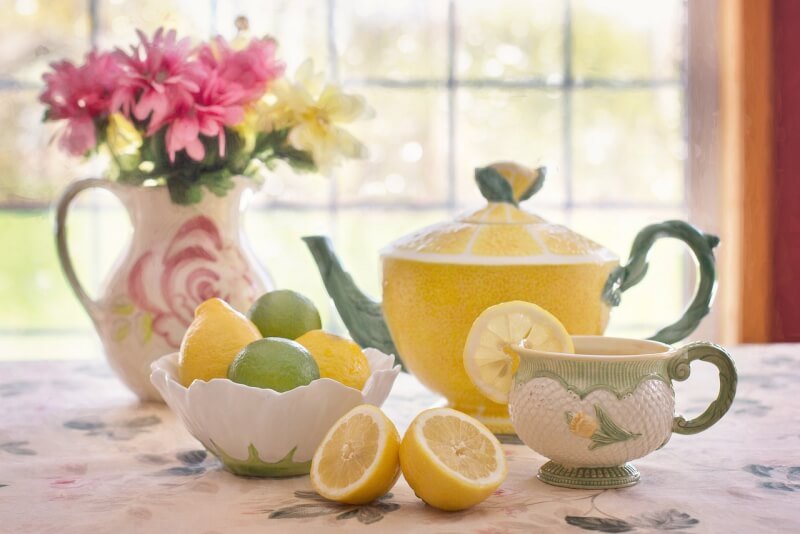
Tea Steeping Techniques
Steeping tea is the process of infusing the tea leaves in hot water to extract the flavors and aromas. While it may seem straightforward, there are a few key techniques to keep in mind to ensure optimal results.
First and foremost, always read the instructions provided with the tea. Different teas may have specific steeping guidelines that should be followed for the best flavor. Pay attention to the recommended steeping time and water temperature.
The steeping time is an important factor that greatly influences the taste of the tea. Steeping too short may result in a weak or underdeveloped flavor, while steeping too long can lead to a bitter or astringent taste. As a general guideline, black teas should be steeped for 3 to 5 minutes, green teas for 2 to 3 minutes, and white teas for 4 to 6 minutes. Herbal teas often require longer steeping times, ranging from 5 to 7 minutes.
However, these times are not set in stone and can be adjusted based on personal taste. If you prefer a stronger cup of tea, you can steep it for a longer period. Conversely, if you prefer a milder taste, you can decrease the steeping time. It’s all about finding the perfect balance that suits your preferences.
To ensure accuracy and consistency in steeping time, consider using a tea timer or stopwatch. These tools help you keep track of the steeping time, allowing you to achieve the desired strength of tea with each brew.
Tea Infusers and Strainers
Using the right infuser or strainer is essential in achieving a smooth and flavorful cup of tea. Infusers are used to hold the tea leaves while they steep in the water, while strainers are used to strain out the solid particles from the brewed tea.
When choosing an infuser, consider the type of tea you will be brewing. Different infusers are designed to accommodate different types of tea. For example, a fine mesh infuser is ideal for loose leaf teas, as it prevents the leaves from escaping into the cup while allowing the flavors to infuse into the water. For herbal teas, you may opt for a larger infuser that provides more space for the herbs to expand.
When evaluating different materials for infusers, take into account their durability, ease of cleaning, and how well they retain heat. Stainless steel infusers are a popular choice due to their durability and heat retention properties. Silicone and nylon infusers are also available and are known for their flexibility and ease of cleaning. Ceramic and glass infusers can be aesthetically pleasing, but they may not retain heat as well.
Regardless of the material, it is important to clean and maintain your infuser or strainer properly. Rinse and wash the infuser after each use to remove any residual tea leaves. If necessary, use a brush to gently scrub away any stubborn particles. Allow the infuser to dry completely before storing to prevent mold or bacterial growth.

Teapot or Teacup Selection
The selection of the right teapot or teacup can greatly enhance your tea brewing experience. There are several things to consider when choosing the right vessel for your tea.
Firstly, select a teapot or teacup that offers proper heat retention. Tea benefits from a consistent and optimal brewing temperature, and vessels that can retain heat well help in achieving this. Ceramic and cast iron teapots are known for their excellent heat retention properties, while double-walled glass teacups can keep the tea warm for a longer period.
Consider the capacity and number of servings needed when selecting a teapot or teacup. If you often brew tea for multiple people or enjoy hosting tea parties, a larger teapot may be more suitable. On the other hand, if you prefer brewing tea for one, a smaller teapot or teacup may be more appropriate. Ensuring the desired capacity can help you brew the perfect amount of tea without any wastage.
Choose materials that are suitable for the type of tea you usually brew. Ceramic teapots are versatile and can be used for any type of tea. Porcelain teapots, on the other hand, are commonly used for brewing green and white teas due to their ability to maintain lower temperatures. If you enjoy brewing herbal teas, consider using a glass teapot, as it allows you to appreciate the vibrant colors and infusion process.
Sweeteners, Milk, and Other Additions
Whether to add sweeteners, milk, or other additions to your tea is a matter of personal preference. Some people enjoy their tea plain, while others like to enhance the flavors or balance the bitterness with additional ingredients. Here are some considerations when deciding whether to add extras to your tea.
If you have a sweet tooth, you may consider adding sweeteners like sugar, honey, or even maple syrup. These can add a touch of sweetness to your tea, enhancing the flavors and making it more enjoyable. Experiment with different types of sweeteners to find the one that complements your tea best. Keep in mind that adding sweeteners can alter the taste profile of the tea, so it’s best to start with a small amount and adjust to your liking.
Milk or cream is another common addition to tea, particularly in British tea traditions. Adding milk can help to mellow out the bitterness of some teas and create a creamier texture. However, it’s important to note that adding milk is not recommended for all types of teas. It is commonly added to black teas, but it may not pair well with delicate green or white teas. Experimentation is key in finding the right balance of milk or cream for your preferred tea.
In addition to sweeteners and milk, there are other flavor enhancers that can be explored. For example, adding a splash of lemon juice to black tea can brighten the flavors and add a refreshing twist. Spices like cinnamon, cardamom, or ginger can be added to create unique and warming flavors. Be open to trying different combinations and finding the perfect additions that enhance your tea experience.
However, it’s important to respect traditional tea customs and preferences when adding extras to your tea. For example, in some cultures, adding milk to certain teas may be considered taboo. Always be mindful of the tea’s origins and traditional preparation methods. While it’s fun to experiment, it’s equally important to appreciate and respect the rich heritage of tea.
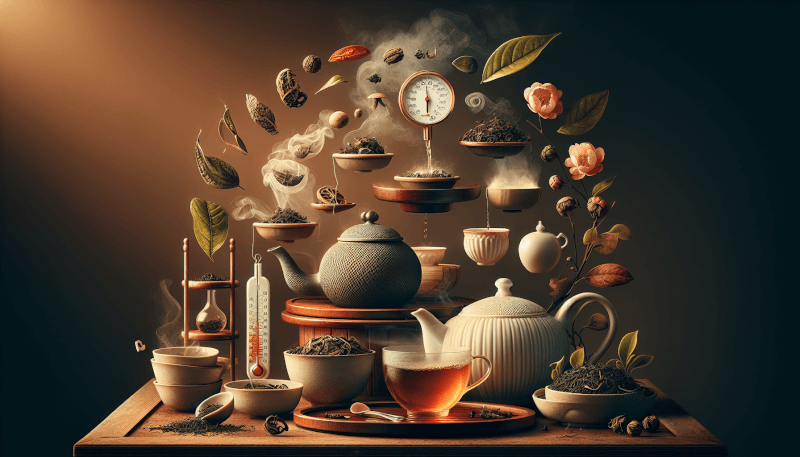
Tea Serving and Enjoyment
Serving and enjoying tea is an art in itself, and taking the time to do it properly can greatly enhance your overall tea experience. Here are some tips for serving and savoring your perfectly brewed cup of tea.
When pouring your tea, be sure to pour it into preheated cups or mugs. Preheating the serving vessel helps to maintain the ideal temperature of the tea and ensures that it stays warm for longer. Simply pour hot water into the cups or mugs and let them sit for a minute before discarding the water.
Consider serving your tea with appropriate teatime accompaniments. In British tradition, this may include scones with clotted cream and jam, finger sandwiches, or pastries. However, you can also pair your tea with other snacks or treats that you enjoy. Some popular options include biscuits, cookies, or even a slice of cake. The choice of accompaniments is entirely up to you and should be tailored to your personal preferences.
Allow the tea to cool to an enjoyable temperature before taking your first sip. The ideal drinking temperature varies depending on the type of tea and personal preference. Be patient and give the tea a few minutes to cool down, as sipping excessively hot tea can burn your tongue and mask the flavors. Take this time to appreciate the aroma wafting from the cup and prepare your senses for the first sip.
Once the tea has reached a comfortable temperature, take the time to savor and appreciate each sip. Pay attention to the flavors, the mouthfeel, and the overall experience. Take note of any nuances or subtleties that make the tea unique. Engaging all your senses in the tea-drinking process can elevate the experience and allow you to fully enjoy the complexities of the brew.
Proper Tea Storage
Properly storing your tea is crucial in preserving its freshness, flavor, and quality. Here are some guidelines to keep in mind when storing your tea collection.
Store tea in airtight containers to protect it from exposure to light, heat, and moisture. Oxygen, light, and heat can degrade the tea leaves and affect their flavor. Airtight containers, such as tins or glass jars with tight-fitting lids, help to create a protective barrier and maintain the tea’s freshness for a longer duration.
Label and organize your teas for easy access. Properly labeling your tea containers helps to identify the type, origin, and brewing instructions. This makes it easier to select the right tea for each occasion and ensures that you always know what you have in your collection. Consider using moisture-proof labels or penning the details directly onto the container to prevent any smudging or fading.
Use your tea within its recommended shelf life. While tea doesn’t technically expire, it does lose its freshness and flavor over time. Most teas have a recommended shelf life of 1 to 2 years. Herbal teas, due to their lack of tea leaves, can typically be stored for longer. To ensure the best quality, use your teas within the recommended time frame and avoid accumulating excessive amounts that may go unused.
Avoid storing different types of teas together. While it may be convenient to store all your teas in one place, it’s important to avoid mixing different types together. Each tea has its unique flavors and characteristics, and storing them together can result in cross-contamination and loss of individual flavors. Consider dedicating separate containers or compartments for different types of teas to maintain their distinct qualities.
By following these storage guidelines, you can enjoy the freshest and most flavorful cups of tea for a prolonged period. Proper storage helps to preserve the integrity of the tea leaves and ensures that each brew is as enjoyable as the first.
In conclusion, brewing the perfect cup of tea is a delightful and rewarding process. By considering factors such as the type of tea, water selection and preparation, tea leaf measurement, water temperature control, steeping techniques, tea infusers and strainers, teapot or teacup selection, sweeteners and other additions, tea serving and enjoyment, and proper tea storage, you can elevate your tea-drinking experience to new heights. Remember, tea brewing is an art that can be tailored to your personal preferences, so don’t be afraid to experiment and discover the flavors that bring you the most joy. Savor each sip, and appreciate the rich flavors, aromas, and traditions that come with a cup of tea. Cheers to brewing the perfect cup every time!
